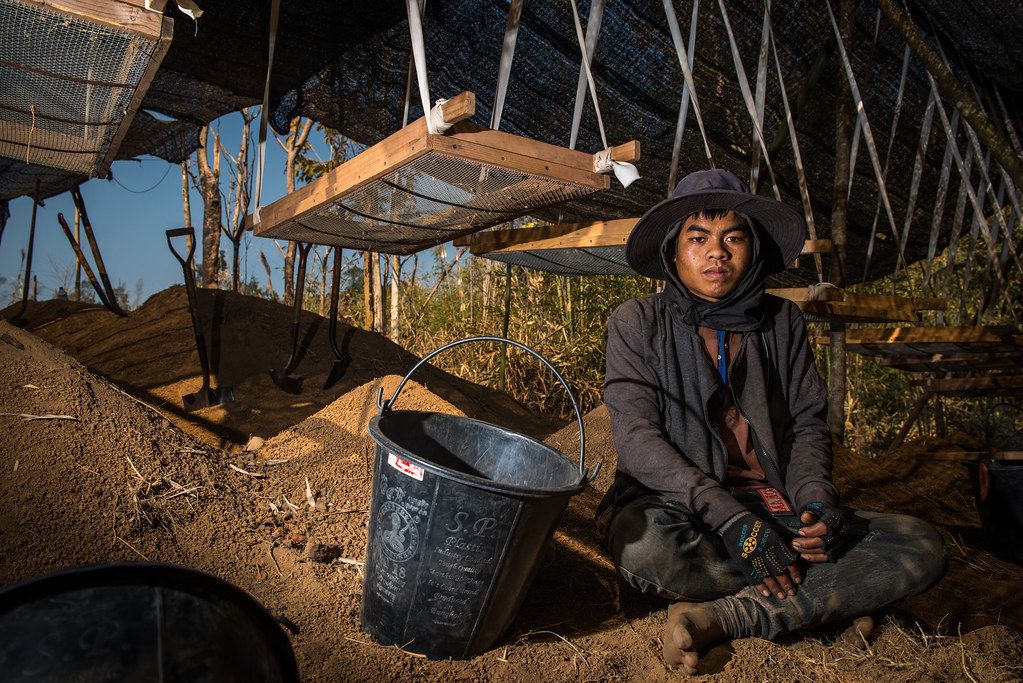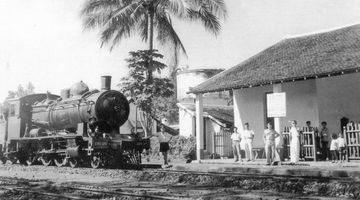Savannakhet Laos – Your Quick Travel Guide
In a nutshell
Savannakhet is the second largest city in Laos. Separated from the Isan provinces of Thailand only by the majestic Mekong River, it gained a sudden popularity among westerners just few years ago when a new friendship bridge between the two countries was opened.
Why go to Savannakhet
It has since then become a valid alternative to Vientiane for whoever needs a border run or, because of the presence of the Thai consulate, a new visa.
Unfortunately many of the visitors never get to far from the bus station area where the consulate is, missing the chance to discover a fascinating river town, with a colonial historic French quarter, a few interesting temples and the unique opportunity to hold a 200 million year old dinosaur bone.
An unexpected variety of accommodation options will satisfy any taste and budget and the dining scene will also be a pleasant surprise for whoever decide to give Savannakhet a chance. Located on the main route connecting Thailand and Vietnam, it can also be a perfect few days stop for everyone travelling between the two countries.
When to go to Savannakhet
The dry season between November and March is the best time of the year to visit Savannakhet. Temperatures are usually a bit cooler and walking around the old town is more pleasant. Don’t forget to put a jumper in your bag for the nighttime especially if travelling in December and January. The rainy season starts at the end of April and goes on until October, with August being the worst month to visit.
If you’re travelling during mid-October at the end of the rainy season, don’t miss the annual racing boat festival. Held simultaneously on both the Lao and Thai banks of the Mekong, it is a celebration of the importance of the river in the city life. Ceremonies, contests and boats parade go on for several days.
Where to stay in Savannakhet
Considering the number and variety of accommodation options, it looks like Savannakhet is ready to host many more tourists than few those who are actually travelling in this part of the country. The vast majority of the guesthouses and hotels is located within walking distance from the historic district or directly inside it. Simple rooms with just a mattress and a fan will come for as low as LAK50,000 and are the most popular solution among backpackers on a low budget. People searching for something special will have an opportunity to sleep in a restored historic building. Immediately out of the city centre, a new resort by the river has filled the gap in the high-end range.
Where and what to eat in Savannakhet
Talat Yen Plaza, in the heart of the city centre, is the place to go to start your search for food. A wonderful and vibrant night market with plenty of tables and chairs is where you will get the tastier and cheaper food in Savannakhet.
Cafes, bistros and trendy restaurants are scattered all over the historic quarter in beautiful renovated old buildings and they offers a mix of Thai, Lao and Western dishes. Expect to find also a lot of Vietnamese restaurants since Vietnam is just few hours away from Savannakhet.
How to get around Savannakhet
The city centre is small and compact and it can be easily covered on foot.
A tuk-tuk will be useful to travel between the historic district and the bus station or the Thai consulate.
Savannakhet is also a pleasant town to explore by bicycle. Many guesthouses offer a rental service for LAK15,000 a day, while some of the better places will include it for free in your room rate. If you’re planning some longer excursion you might consider renting a motorbike instead which will cost you roughly LAK70,000.
How to get to and from Savannakhet
By air
A small airport is located 3 km southeast of town. Lao Airlines is the only operator and it offers flights to Pakse, Vientiane (with a layover in Pakse) and Bangkok (direct). Fares are quite expensive and departures are scheduled only three times a week.
By bus
The bus station is located close to the city centre, in the northern part of town near the Thai consulate. Frequent daily buses connect Savannakhet to Vientiane, which is roughly 9 hours away. The cheaper option is the local bus, departing several times in the morning and covering the trip in the daytime. A ticket should cost just LAK75,000 but keep in mind that there’s no air-con, the trip is a couple of hours longer and these buses are often overcrowded. The overnight VIP has much more comfortable assigned seats, air-con and a toilette and it costs LAK120,000.
Pakse is also well connected with multiple departures every day. A ticket will cost you LAK50,000 and the trip takes 6 hours.
Other destinations in Lao served from Savannakhet include Thakhek, Sekong, Salavan and Attapeu.
The majority of the tourists arrive to Savannakhet directly from Thailand. The friendship bridge was opened in 2007 and it’s located few km north of town. International buses connect Savannakhet to Mukdahan every hour or two with an easy onward hop from Mukdahan to Bangkok or eslewhere in Thailand. The bus will cost you LAK12,000 and the whole process with the stop at the boarder to clear with immigration should take 1 hour.
Several options are also available if your next destination in Vietnam. Keep in mind that in this case there’s no visa on arrival, so you’ll have to sort it out in advance. The closest border is Lao Bao. A bus to the Vietnamese border will take 5 hours and it will cost you LAK35,000. From there you can get on a bus to several destinations in Vietnam.
Alternatively direct buses connect Savannakhet to Da Nang, Hue and Dong Ha. Depending on the day of the week you can choose between local and VIP buses.
Is Savannakhet a safe place to visit?
The major danger any foreigner will face in Savannakhet is the impressive number of stray dogs which populate especially the old town. Some of them tend to be aggressive at night. Use a strong voice to scare them away and if you’re alone and they look too aggressive be ready to make a detour.

































